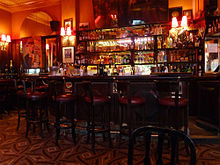Montparnasse is an area in the south of Paris, France, on the left bank of the river Seine, centred at the crossroads of the Boulevard du Montparnasse and the Rue de Rennes, between the Rue de Rennes and boulevard Raspail. It is split between the 6th, 14th, and 15th arrondissements of the city. Montparnasse has been part of Paris since 1669.

Tour Maine-Montparnasse, also commonly named Tour Montparnasse, is a 210-metre (689 ft) office skyscraper located in the Montparnasse area of Paris, France. Constructed from 1969 to 1973, it was the tallest skyscraper in France until 2011, when it was surpassed by the 231-metre (758 ft) Tour First in the La Défense business district west of Paris's city limits. It remains the tallest building in Paris proper and the third tallest in France, behind Tour First and Tour Hekla. As of July 2023, it is the 53rd-tallest building in Europe.

The 14th arrondissement of Paris, officially named arrondissement de l'Observatoire, is one of the 20 arrondissements of the capital city of France. It is situated on the left bank of the River Seine, containing most of the Montparnasse district. Although today Montparnasse is best known for its skyscraper, Tour Montparnasse, as well as its major railway terminus, Gare Montparnasse, these are both actually located (partly) in the neighbouring 15th arrondissement. The district has traditionally been home to many artists as well as a Breton community, arrived at the beginning of the 20th century upon the creation of the Montparnasse railway terminus.
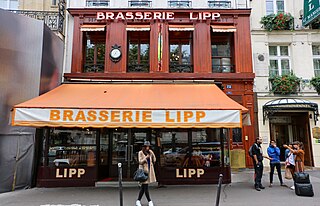
In France, Flanders, and the Francophone world, a brasserie is a type of French restaurant with a relaxed setting, which serves single dishes and other meals. The word brasserie is also French for "brewery" and, by extension, "the brewing business". Although most brasseries still serve a large selection of beers, most of them offer a wider choice of beverages such as wines and liquors. A brasserie can be expected to have professional service, printed menus, and, traditionally, white linen—unlike a bistro which may have none of these. Typically, a brasserie is open every day and serves the same menu, generally composed of a few traditional French dishes, all day. A classic example of a brasserie dish is steak frites.

A bistro or bistrot, in its original Parisian form, is a small restaurant serving moderately priced, simple meals in a modest setting. The term has also become used by more pretentious restaurants.
Paris Métro Line 11 is one of the sixteen lines of the Paris Métro. It links Châtelet to Mairie des Lilas in the northeastern suburbs. At a length of 6.3 km and 13 stations served, it is currently the shortest of the 14 main Métro lines but is being extended by 6 stations. With 47.1 million riders in 2017, it is the thirteenth busiest line in the network.

The Pullman Paris Montparnasse Hotel is a skyscraper hotel in the Montparnasse quarter, in the 14th arrondissement of Paris, France. It is part of the Vandamme Nord mixed use complex, which is currently known by the commercial name Les Ateliers Gaîté. With 957 rooms, it is the third-largest hotel in Paris after the Le Méridien Étoile and the Hyatt Regency Paris Étoile, and one of the French capital's major convention venues.
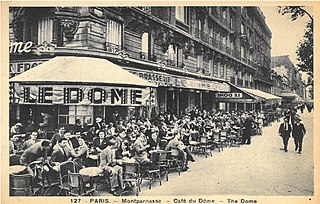
Le Dôme Café or Café du Dôme is a restaurant in Montparnasse, Paris that first opened in 1898. Based on the example established by La Closerie des Lilas and followed by Café de la Rotonde, Le Select, and La Coupole, Le Dôme was renowned as an intellectual gathering place for artists and writers during the interwar period. Le Dôme created and disseminated gossip and provided message exchanges and an 'over the table' market that dealt in artistic and literary futures. It was frequented by painters and sculptors of the School of Paris as well as writers, poets, models, art connoisseurs and dealers.

The Café de la Rotonde is a famous café in the Montparnasse Quarter of Paris, France at 105 Boulevard du Montparnasse, known for its artistic milieu and good food. In its official website, La Rotonde defines itself as a brasserie and restaurant. Located on the Place de Picasso, that also holds the sculpture of Honoré de Balzac by Auguste Rodin called Monument to Balzac at the corner of Boulevard du Montparnasse and Boulevard Raspail, it was founded by Victor Libion in 1911. Based on examples established by La Closerie des Lilas and Le Dôme Café, La Rotonde, along with La Coupole and Le Select, was renowned as an intellectual gathering place for notable artists and writers during the interwar period due to its open atmosphere and reasonable prices. Unlike many establishments in Montparnasse, La Rotonde has retained much of its bohemian charm and continues in operation to this day as a popular and chic spot for classic French cuisine lovers and the Parisian artistic intelligentsia.

Henri Victor Gabriel Le Fauconnier was a French Cubist painter born in Hesdin. Le Fauconnier was seen as one of the leading figures among the Montparnasse Cubists. At the 1911 Salon des Indépendants Le Fauconnier and colleagues Jean Metzinger, Albert Gleizes, Fernand Léger and Robert Delaunay caused a scandal with their Cubist paintings. He was in contacts with many European avant-garde artists such as Wassily Kandinsky, writing a theoretical text for the catalogue of the Neue Künstlervereinigung in Munich, of which he became a member. His paintings were exhibited in Moscow reproduced as examples of the latest art in Der Blaue Reiter Almanach.
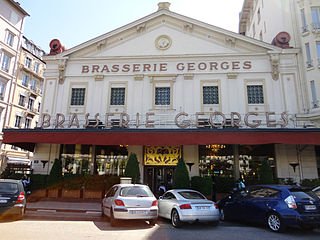
The Brasserie Georges is a restaurant located in the 2nd arrondissement of Lyon. It is the oldest brasserie in the city and one of the largest brasseries in Europe. Its reputation is now international. With a history closely linked to that of Lyon, the brasserie serves typical dishes including the famous sausage of Lyon with pistachios, and recipes from other regions such as sauerkraut, baked Alaska or the seafood on their menu. In 1986 the brasserie served the biggest sauerkraut in the world; it weighed a ton and a half. In 1996, the largest baked Alaska was served. The Brasserie Georges brews its own beer, a tradition from its inception, when water in Lyon was considered of exceptional quality. The restaurant never closes throughout the year. Over 700 guests can be served at each service. On 8 December, during the fête des lumières, over 2,500 meals were served in a service. It is sometimes called the BG or Le Georges.

Most beer sold in France is pilsner lager, mass-produced by major breweries which control over 90% of the market, although there are also traditional beer styles, such as top-fermented Bière de Garde, and a number of microbreweries.
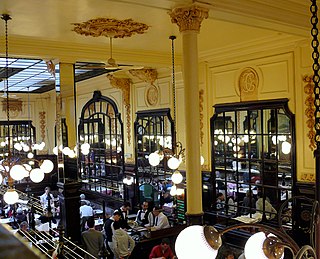
In France, a bouillon is a traditional, spacious restaurant that usually serves traditional French cuisine, in particular a bouillon, which has provided the name for this class of restaurants.

Bal Bullier was a ballroom in Paris, France, created by François Bullier in the mid-nineteenth century.
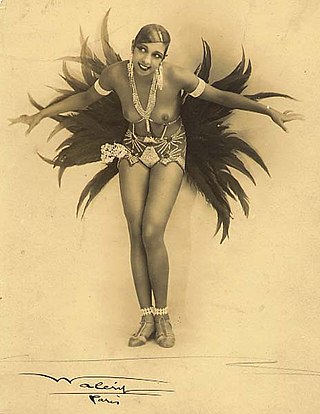
The Années folles was the decade of the 1920s in France. It was coined to describe the social, artistic, and cultural collaborations of the period. The same period is also referred to as the Roaring Twenties or the Jazz Age in the United States. In Germany, it is sometimes referred to as the Golden Twenties because of the economic boom that followed World War I.

Fouquet's Paris is a historic high-end brasserie restaurant in Paris, France. It is located at 99 Avenue des Champs-Élysées and is part of Hotel Barrière Le Fouquet's Paris. The menu, designed in collaboration with Chef Pierre Gagnaire, continues the tradition of classic French cuisine, including Fouquet's beef tartare, sole meunière, Simmental beef fillet with Champs-Elysées sauce.

La Coupole is a famous brasserie in Montparnasse in Paris. It was opened on December 20, 1927 by Ernest Fraux and René Lafon during the Roaring Twenties when Montparnasse housed a large artistic and literary community – expatriates and members of the Lost Generation. They decorated the place in the contemporary art deco style. Artists of the School of Paris and intellectuals frequented the brasserie in the interwar period.

René Marcil was a Canadian Québécois artist, painter and fashion illustrator. He spent most of his professional life in New York, Paris, on the French Riviera and in London. Marcil played a central role in the successful post-war launch of Christian Dior’s New Look collection in the United States.
Johanna Krawczyk is a French writer and screenwriter. She was educated at Sciences Po, UCL and Paris 3.

Le Select is a Parisian brasserie founded in 1923 in the 6th arrondissement at 99 Boulevard Montparnasse, in the Notre-Dame-des-Champs neighborhood. It was one of the more prominent meeting places of the Parisian intellectuals between the two world wars, with a significant place in the Bohemian Culture of the period.


